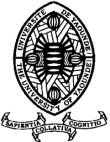Modifiable and Non-Modifiable Factors Associated with Hyperuricemia in Patients Receiving Chronic Hemodialysis in Douala (Cameroon)
DOI:
https://doi.org/10.5281/hra.v1i1%20Jan-%20Feb-Mar.4703Keywords:
Cameroon, End Stage Kidney Disease, HyperuricemiaAbstract
ABSTRACT Background. Hyperuricemia increases morbidity in end-stage chronic kidney disease (ESKD). The purpose of this study was to report its prevalence and associated factors in a population of sub-Saharan Africa adults with ESKD, the majority of whom receive two dialysis session per week. Materials and methods. We performed a prospective cross sectional study from January to April 2017 at the Hemodialysis Center of the Douala General Hospital (Cameroon). We recruited all consenting adults with ESKD who respect diet and lifestyle modifications. For each participant, we collected their sociodemographic and clinical data which were analyzed using the software SPSS 21.0. We made a multivariate analysis with logistic regression to assess the associated factors. The results were presented with the Odds ratio (OR) and its 95% Confidence interval. Results. A total of 180 participants (61.7% males) were recruited. The mean age was 49.5 ± 13.9 years and the main underline nephropathies were glomerular (33.9%) and vascular (30.6), with hypertension (91.1%), overweight (33.9%) and diabetes (23.9%) been the most frequent comorbidities. The prevalence of hyperuricemia was 81.7%. An age less than 50 years (OR=11.1 [2.8; 43.3]) was the only non-modifiable associated factors, while long interval between dialysis (OR=4.4 [1.5; 15.4]) and overweight (OR=4.5 [1.4; 14.7]) were the modifiable factors in our study/survey. Conclusion. To reduce the burden of hyperuricemia at ESKD, practicians have to reinforce therapeutic education for CKD, particularly for overweight patients and patients less than 50 years old, and improve the adhesion and compliance of patients to dialytic sessions. RÉSUMÉ Introduction. L'hyperuricémie augmente la morbidité de la Maladie Rénale Chronique Terminale (MRCT). Le but de cette étude était de déterminer la prévalence et les facteurs associés à l'hyperuricémie dans une population d'Afrique Subsaharienne avec MRCT, recevant deux séances d’hémodialyse par semaine. Matériels et méthodes. Nous avons réalisé une étude transversale prospective de janvier à avril 2017 auprès des patients adultes du centre d'hémodialyse de l’Hôpital Général de Douala (Cameroun). Nous avons recueilli leurs données sociodémographiques et cliniques qui ont été analysées à l'aide du logiciel SPSS 21.0. Nous avons effectué une analyse multivariée avec régression logistique pour évaluer les facteurs associés. Les résultats sont présentés avec l'Odds ratio (OR) et son intervalle de confiance à 95%. Résultats. Au total, 180 participants (61,7 % d'hommes) ont été recrutés. L'âge moyen était de 49,5 ± 13,9 ans et les principales néphropathies sous-jacentes étaient glomérulaires (33,9 %) et vasculaires (30,6). L'hypertension (91,1 %), le surpoids (33,9 %) et le diabète (23,9 %) étant les comorbidités les plus fréquentes. La prévalence de l'hyperuricémie était de 81,7 %. L’âge <50 ans (OR=11,1 [2,8 ; 43,3]) était le seul facteur non modifiable, alors qu'un long intervalle entre les dialyses (OR=4,4 [1,5 ; 15,4]) et le surpoids (OR=4,5 [1,4 ; 14,7]) étaient les facteurs modifiables. Conclusion. Pour limiter l'hyperuricémie en MRCT, les praticiens doivent renforcer l'éducation thérapeutique du patient, en particulier pour les patients en surpoids et les patients de moins de 50 ans, et améliorer l'adhésion et l'observance des patients aux séances de dialyse.Downloads
Published
How to Cite
Issue
Section
License
Authors who publish with this journal agree to the following terms:
- Authors retain copyright and grant the journal right of first publication with the work simultaneously licensed under a Creative Commons Attribution License CC BY-NC-ND 4.0 that allows others to share the work with an acknowledgement of the work's authorship and initial publication in this journal.
- Authors are able to enter into separate, additional contractual arrangements for the non-exclusive distribution of the journal's published version of the work (e.g., post it to an institutional repository or publish it in a book), with an acknowledgement of its initial publication in this journal.
- Authors are permitted and encouraged to post their work online (e.g., in institutional repositories or on their website) prior to and during the submission process, as it can lead to productive exchanges, as well as earlier and greater citation of published work










